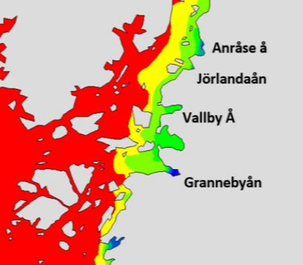Contact
Department of Aquatic Sciences and Assessment, Division of Geochemistry and Hydrology
Department of Aquatic Sciences and Assessment, Division of Geochemistry and Hydrology

DAEMONS is a three year project that is investigating the effect of environmental change on nutrient dynamics in lakes, down rivers, and out into the sea. Nutrient changes may be driven by changes in land-use, agricultural management, climate change and atmospheric pollution. These changes potentially have many negative effects: they might alter aquatic food webs, pose problems for drinking water treatment, lead to harmful algal blooms, and damage valuable coastal ecosystems such as sea grass beds.
Past research into aquatic ecosystems has largely focused on the effects of individual nutrient concentrations (e.g. nitrogen, phosphorus, carbon), but recent work has suggested that the ratio of these nutrients may be a better indicator of ecosystem health – when the different nutrients are in balance, streams and lake biota are more able to utilise them and to reduce downstream impacts. In DAEMONS, we plan to combine field measurements, lab measurements, and modelling, in order to develop new process understanding, with the aim of generating advice for land owners and practitioners to manage and mitigate nutrient flows from headwater streams to the coastal zone.
The regular fieldwork will involve monthly sampling of 16 lakes, streams and rivers in the Anråse river catchment, 40km north of Gothenburg. These waterbodies will cover the primary land uses within the catchment: forest, agriculture, and mire. Additional fieldwork will take the form of intensive quarterly campaigns. For these campaigns, over a few days 50 lakes and streams will be sampled, and 50 samples will be taken in the coastal waters, from river mouths through the Bohuslän fjords to the open sea. Our field data will be supplemented by a synthesis of other data that has been collected in the area during the last 60 years. The lab experiments will focus on measuring the extent that different forms of organic carbon in the water can be used as a food source by microorganisms. Finally, the data will be used to model how future changes in land use and climate will affect nutrient flows from source to sea, and how negative effects might be mitigated.
Funding
DAEMONS is funded by Formas.